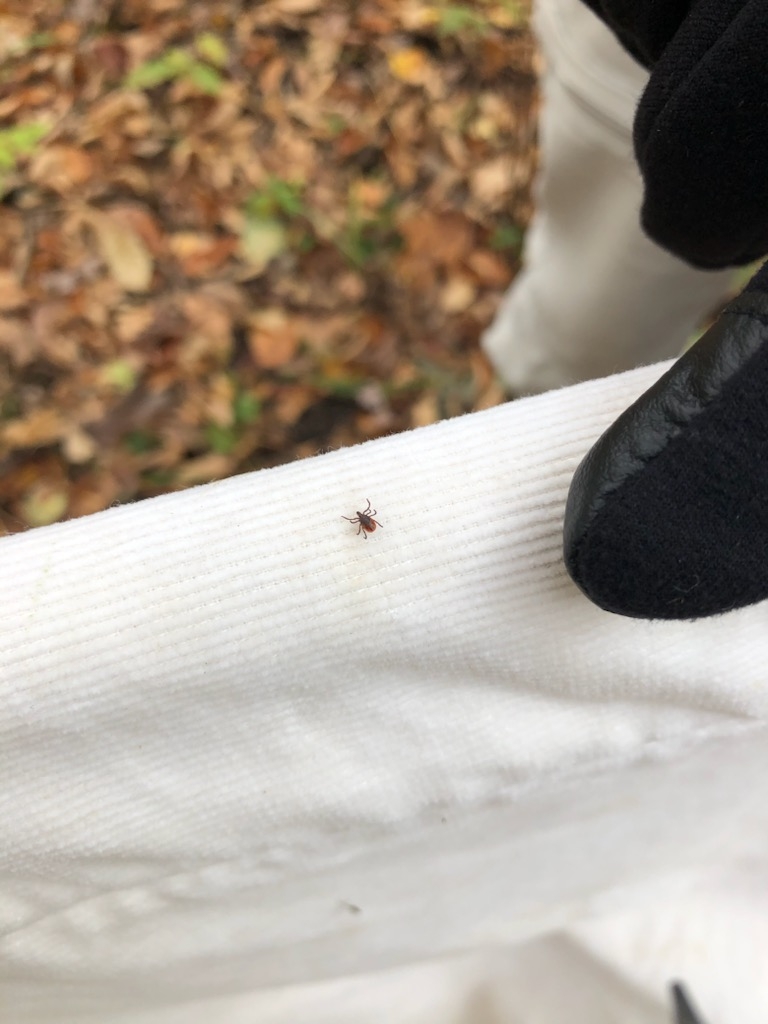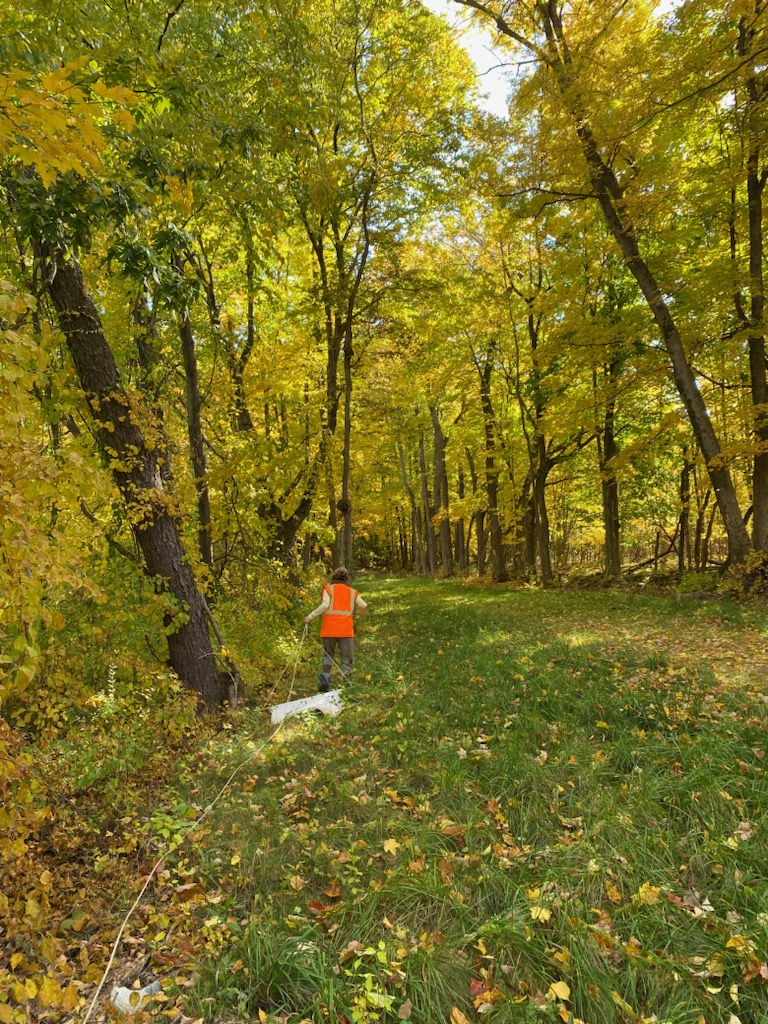
April 13, 2023 | Montpelier VT – The Environmental Surveillance Program conducts annual tick and mosquito surveillance starting in the spring, focusing on arthropods capable of transmitting diseases (called “vectors”), such as Lyme disease and West Nile virus.
Spring Tick Surveillance
Working with the VT Department of Health, the Environmental Surveillance Program (program) at the Agency of Agriculture, Food and Markets, collects ticks statewide at 48 locations twice every spring to monitor numbers of ticks and the diseases they may carry. In teams of two, vector technicians flag areas of tick habitat (for example, along stone walls, field/woods edges, brushy areas, leaf litter) and collect the ticks in vials for counting, species identification, and disease testing. Using the data gathered, the program is able to help identify areas of high tick populations or disease occurrence, and can track trends over time, such as the migration of tick populations within the state. If you see our friendly technicians in the field, you’ll recognize them by our white hazmat suits, clipboards, and someone dragging a large white flannel flag through the vegetation. Give us a wave!

Image: VAAFM samples for ticks in the landscape using white sheet dragged through vegetation, usually near a tree line in tall grass.
Mosquito Surveillance
For many years now the program has conducted surveillance for Vermont mosquitoes that can transmit diseases such as West Nile virus and Eastern Equine Encephalitis. There are over 100 trap locations statewide and our technicians collect mosquitoes every week from June through October. The mosquitoes collected are counted, identified to species, and submitted to the VT Department of Health laboratory in Colchester for disease testing. The data gathered helps keep Vermonters informed of real-time risk levels in their communities. The program thanks the private landowners who generously allow us to trap mosquitoes on their property.
Other Surveys
- Passive Tick Surveillance Program – Vermont citizens can submit ticks they find on themselves, their kids, or pets, or in the environment for identification. The Vermont Agricultural and Environmental Laboratory (VAEL) will identify the tick to species, life stage, sex, and rate of engorgement. In the event you become ill, this information can help your doctor make informed decisions. The VAEL does not test submitted ticks for disease.
- Tick Phenology – Every month of the year, weather permitting, the Program visits three sites, one each in the north, central, and southern parts of the state, to help it understand when the different life stages of ticks emerge in Vermont. This can be especially helpful in terms of nymphal ticks, as they are extremely small and hard to see. Knowing when ticks are most active is one way to protect ourselves from diseases carried by ticks.
What You Can Do
Protect yourself!
- Wear an EPA-registered insect repellant when you’re outdoors
- Cover up with long pants and sleeves, tuck your pants into your socks
- Avoid being outdoors during mosquito-heavy times of day (early morning and dusk)
- Do tick checks daily, put your outdoor clothes in the dryer on high for 20 minutes, and shower after outdoor activity to remove crawling ticks
- Remove ticks promptly and monitor bite site for any reaction; see your doctor if you have concerns
More resources
- VT Agency of Agriculture – Ticks and Mosquitoes – annual reports and more information
- BeTickSmart – VT Department of Health’s informational page on ticks in Vermont
- CDC – US Centers for Disease Control and Prevention’s page on ticks
